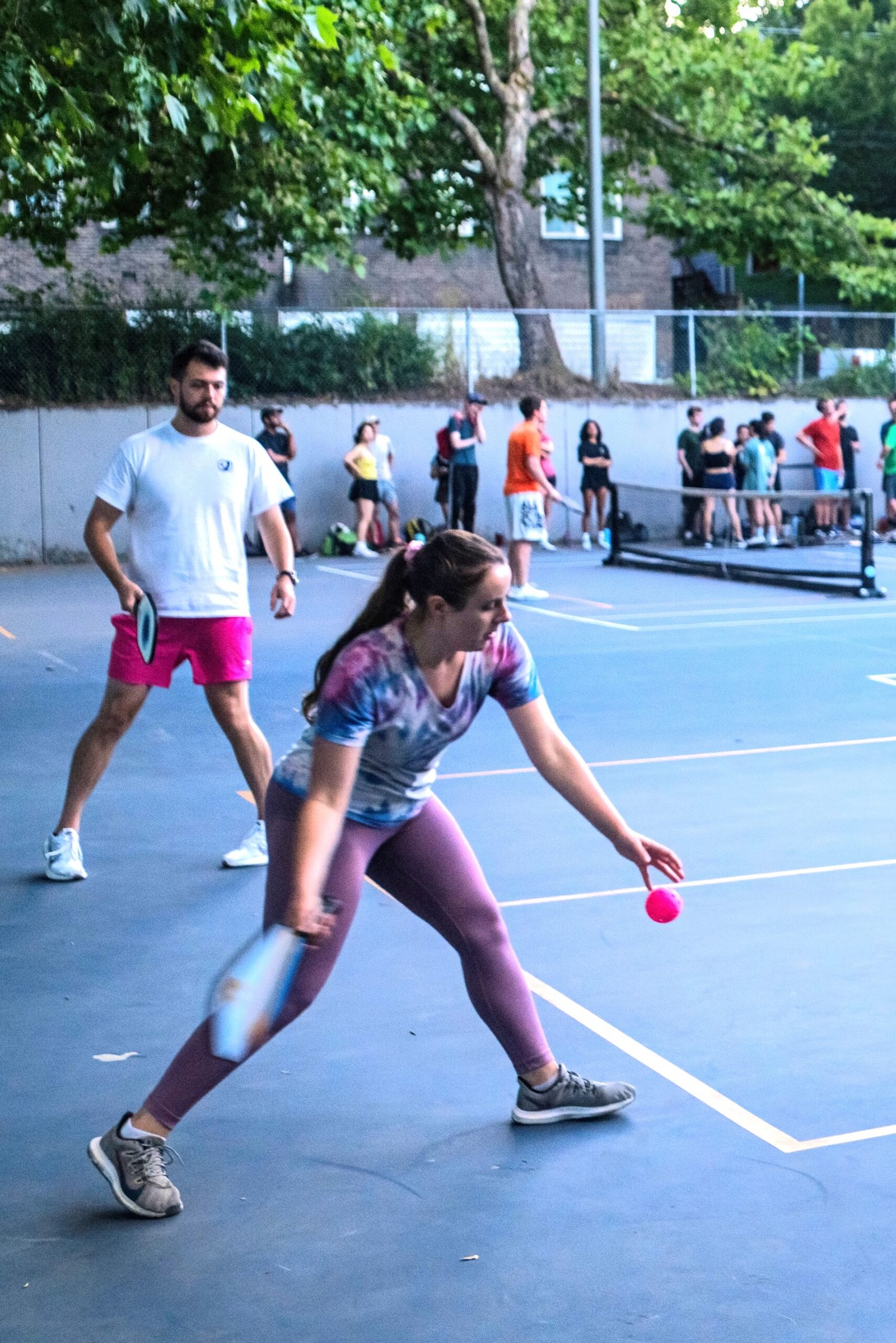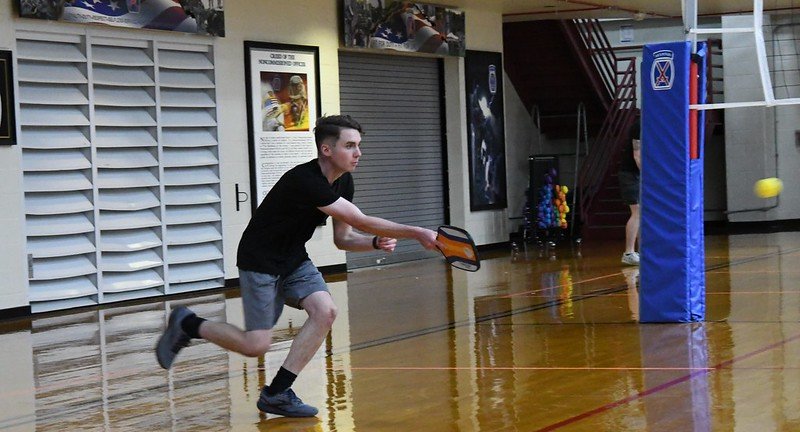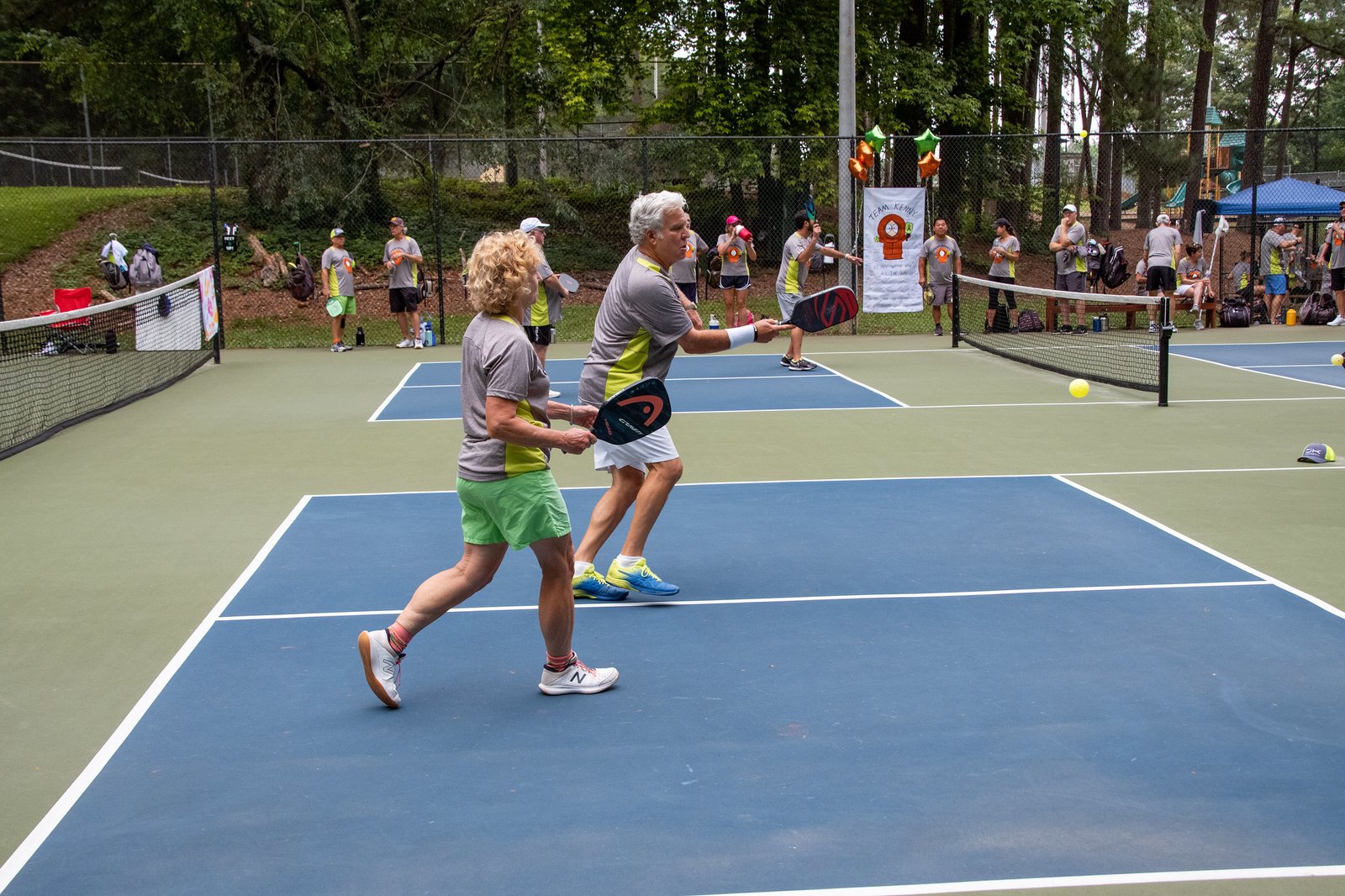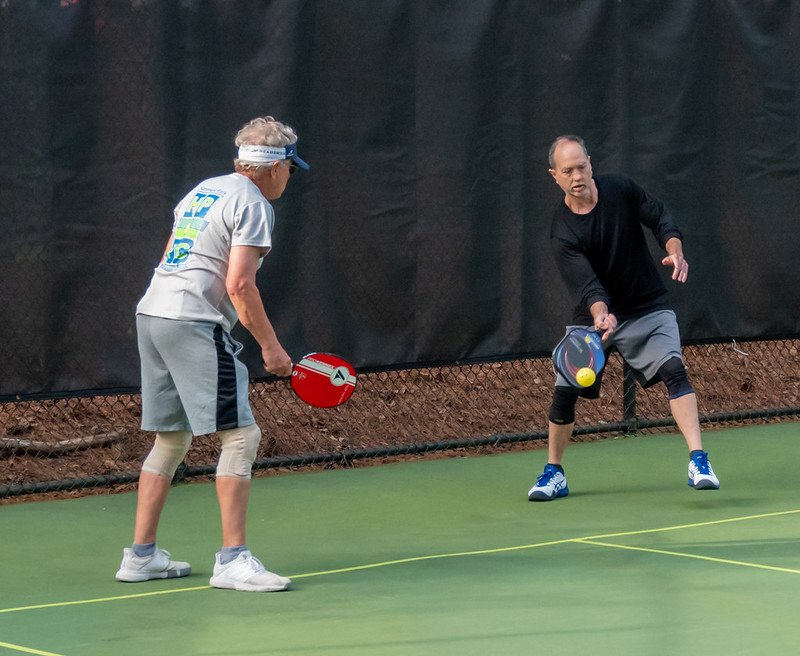Pickleball, a dynamic and fast-growing sport, has overtaken the recreational world. With its unique blend of elements borrowed from tennis, badminton, and table tennis, this paddle sport offers an exciting and accessible experience for players of all ages and skill levels. The fundamental rules governing the serve are at the heart of every pickleball game, which sets the stage for each exhilarating rally.
Pickleball serving rules are the cornerstone of fair play and sportsmanship in this engaging sport. Understanding the intricacies of the pickleball serve is essential for beginners and seasoned players. The serve is the starting point of a match and a strategic opportunity to gain an advantage over your opponents.
This comprehensive guide will delve deep into the world of Pickleball serving rules, providing insights into the serving rotation, the non-volley zone (commonly known as “the kitchen”), the double bounce rule, and more. Whether you’re picking up a paddle for the first time or looking to fine-tune your game, this resource will equip you with the knowledge needed to excel in every aspect of the Pickleball game.
Whether you’re playing singles or doubles, the serve is your chance to take control of the game and dictate the tempo. By mastering the intricacies of Pickleball serving rules, you can set the stage for thrilling rallies, strategize effectively, and enjoy the exciting and competitive world of pickleball to its fullest. So, let’s dive in and uncover the key to success in this rapidly growing sport.
Table of Contents
What is illegal serve in pickleball?

An illegal serve in pickleball is a serve that violates the established rules and regulations of the game. Serving is a critical component of pickleball, and players must adhere to specific guidelines to ensure fair play. Here are some common scenarios that result in an illegal serve:
Failure to Clear the Net
The serve must clear the net and land on the opponent’s side in the diagonal service court. If the serve hits the net or doesn’t clear it, it’s considered illegal, and the serving team loses the point.
Foot Fault
The server must keep both feet behind the baseline and within the confines of the service area during the serve. Stepping on or over the baseline or touching the non-volley zone (kitchen) lines with either foot results in a fault.
Serve Out of Turn
The serving order, determined at the beginning of the game, must be followed. If a player serves out of turn, it’s an illegal serve, and the opposing team takes over the serve.
Volleying from the Non-Volley Zone (Kitchen)
Players can only volley (hitting the ball in the air) while standing within the non-volley zone if the ball first bounced in the kitchen. If a player violates this rule, it’s considered an illegal shot.
Double Bounce Rule Violation in Pickleball
The serve and return must each bounce once before players can volley the ball. Hitting the ball in the air before it bounces once on each side of the net is illegal.
Illegal serves result in a fault, and the serving team loses the opportunity to score a point on that serve. In pickleball, adherence to these rules is essential to maintaining fairness and integrity. Players are responsible for knowing and following the rules, and violations can lead to losing points or even losing the serve to the opposing team.
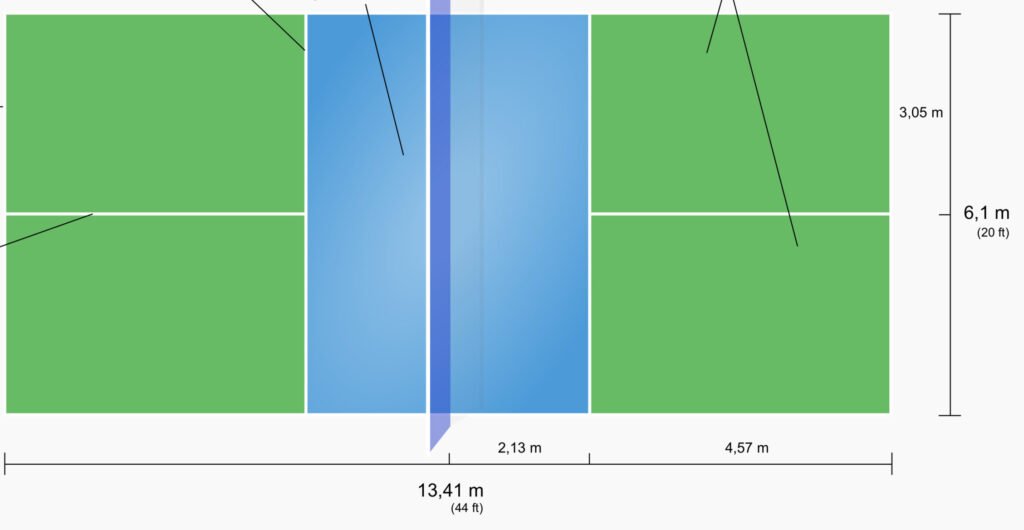
How many serves do you do in pickleball?
In pickleball, each player can serve during a game, and the serving process alternates between the two teams. Unlike some sports like tennis, where you serve until you commit a fault, pickleball follows a rotational serving system.
In doubles play, the serving order for each team is typically established at the beginning of the game. The player on the right-hand side serves first, and their partner serves next. The serving team must win a rally to maintain their serve. When they lose a rally, the opposing team gets the chance to serve, and their serving order also follows a fixed sequence. This sequence continues throughout the game.
In singles play, the server also alternates sides after each point. The serving player serves from the right side on the even-numbered score and from the left side on the odd-numbered score. This rotation ensures fairness and equal opportunities for both players.
So, in essence, you do not serve continuously in pickleball; instead, serving is shared between teammates or alternated between players based on the established order or rotation.
Can I serve backhand in pickleball?
Yes, you can serve a backhand shot in pickleball. While the most common serve in pickleball is the forehand serve due to its ease of execution and control, there are situations where a backhand serve can be effective and strategic.
A backhand serve can offer some advantages. It can surprise your opponents, as it’s less common and may be unexpected. It can also help you vary your serves, making it harder for opponents to anticipate your shots.
However, serving with your backhand can be more challenging regarding control and power, especially for beginners. It requires good skill and practice to execute a strong and accurate backhand serve consistently.
In summary, yes, you can serve backhand in pickleball, and it can be a valuable addition to your repertoire if you’ve developed the necessary skills. Ultimately, the choice between a forehand or backhand serve will depend on your comfort level, playing style, and the tactical situation in your game.

Mastering the Serve: Pickleball Serving Rules and Strategies
Pickleball is a paddle sport that combines elements of tennis, badminton, and table tennis. The serving rules in pickleball are an essential part of the game. Here are the key serving rules:
Serve Rotation
In the sport of pickleball, serving is a fundamental aspect of the game. In doubles play, both players on a team take turns serving the ball, and it’s crucial to establish the serving order at the outset of a game or match. Typically, this order remains fixed throughout the game. Additionally, serving always begins from the right side of the court, as viewed from the server’s perspective, with the aim of serving diagonally to the opposing team’s service court on the opposite side. This diagonal serve placement is a strategic element that adds depth and complexity to the game, requiring precision and skill from players.
Pickleball Service Area
In pickleball, adherence to serving rules is crucial for a fair and competitive game. One of the key regulations is that the server must position themselves behind the baseline and execute their serve from within the designated service area. This service area comprises a 20-foot deep rectangular space extending from the sideline to the non-volley zone, often called the “kitchen.” By maintaining this prescribed serving position, players ensure that their serves are initiated within the defined boundaries, setting the stage for proper gameplay and strategic execution of serves to challenge their opponents
effectively.

Diagonal Serve
In pickleball, the serve is a crucial element of the game, and it must adhere to specific rules to ensure fair play. One of the fundamental serving rules is that the serve must be executed diagonally to the opponent’s service court. This service court is a rectangular area measuring 20 feet in width and 44 feet in length, situated on the opposite side of the net. This diagonal serving requirement adds an element of strategy to the game, as it challenges players to place their serves accurately while considering their opponents’ positions on the court. Proper execution of the diagonal serve is essential for a successful start to any pickleball rally.
Double Bounce Rule
In pickleball, the serve is a critical component of the game, subject to specific rules to ensure fairness and strategic gameplay. The server’s primary objective is to clear the net and make the ball land within the opponent’s service court diagonally. This requires precision and control, as hitting the net or landing outside the service court results in a fault.
After a successful serve, the receiving team must exercise patience and allow the ball to bounce once before returning it. This rule also applies to the serving team once the return is made. The double bounce rule encourages longer rallies and showcases players’ skill in anticipation and quick, strategic shot-making.

Non-Volley Zone (Kitchen)
In pickleball, adherence to the non-volley zone, often called “the kitchen,” is a fundamental game aspect. During the serve, the server and the receiver must remain outside this designated area, which extends 7 feet from the net on both sides of the court. However, once the serve is in play, all players can enter the kitchen and engage in rallies.
It’s crucial to exercise caution not to touch the kitchen lines while making contact with the ball. Remember that you cannot execute a volley, hitting the ball in the air without it bouncing, while positioned within the kitchen unless the ball first bounces within this zone. This rule adds a strategic dimension to the game, emphasizing well-placed shots and court positioning.
Faults on the Serve
In pickleball, a fault during the serve can have significant consequences. Common faults include failing to clear the net, stepping on the baseline, or inadvertently entering the non-volley zone, often called the “kitchen.” When a server commits any of these faults, it results in a “side out.” This means that the serving team loses their turn to serve, and possession of the serve is handed over to the opposing team. A side out can be a pivotal moment in a game, as it not only awards the serve to the opponents but also shifts the momentum in their favor, making precise serving adherence to the rules crucial in competitive pickleball.
Serving Sequence
In pickleball, the serving dynamics are crucial to gameplay. The server initiates play, and they retain the serve until one of two scenarios unfolds. First, if the serving team commits a fault during the serve, such as failing to clear the net or stepping into the kitchen, it results in a loss of serve. Secondly, the serving team loses a rally, meaning the opposing team successfully returns the ball and wins the point. In either case, possession of the serve shifts to the opposing team, and the player who did not start as the first server in the game becomes the new server, maintaining the rotational aspect of pickleball.
Serving Order
In pickleball doubles play, serving order is pivotal in the game’s dynamics. At the game’s outset, the serving order for each team is firmly established. As tradition dictates, the player on the right-hand side takes the first serve, while their counterpart on the left side awaits their turn as the second serve. This initial serving arrangement remains constant for the duration of the game.
However, the tables turn when the serving team relinquishes their serve due to a fault or the opposing team successfully wins a rally. The opposing team seizes the serving opportunity, and their serving order adheres to a predefined sequence, mirroring the conventions set at the commencement of the match. This structured approach ensures fairness and clarity in the pickleball game.
Understanding the fundamental serving rules in pickleball is crucial for a successful game. Still, it’s essential to acknowledge that variations can exist in specific situations and among different tournaments or organizations. While the core rules remain consistent, nuances like court size, scoring, or service regulations may influence aspects. Therefore, it’s highly advisable to acquaint yourself with the precise rules governing the event or location where you’re playing. This attention to detail ensures a fair and enjoyable experience for all players. It helps prevent unintentional rule infractions due to rule differences between venues or events.

